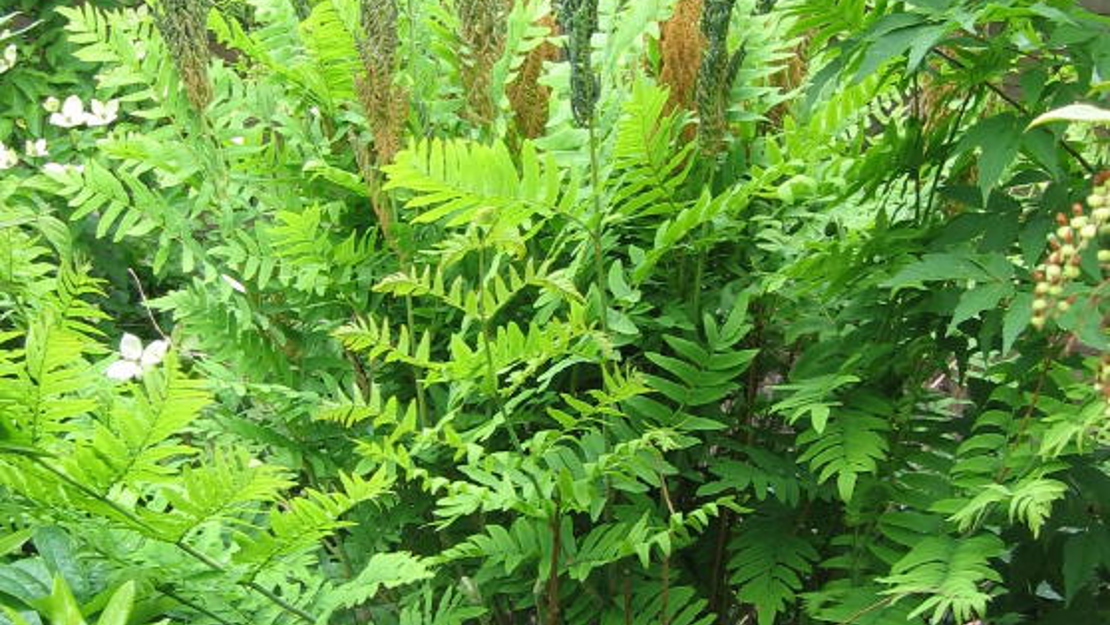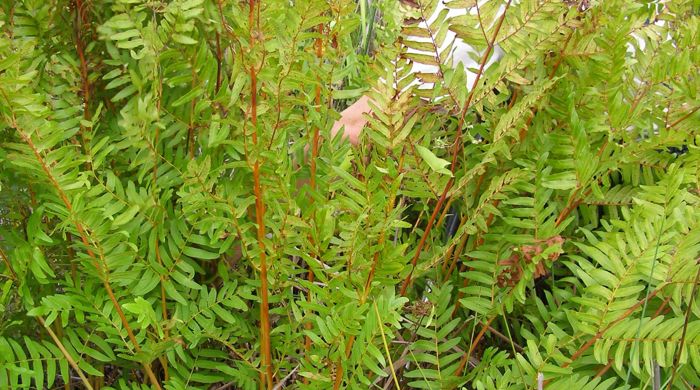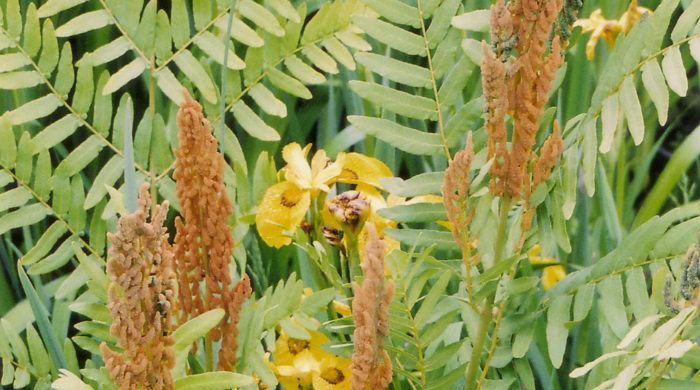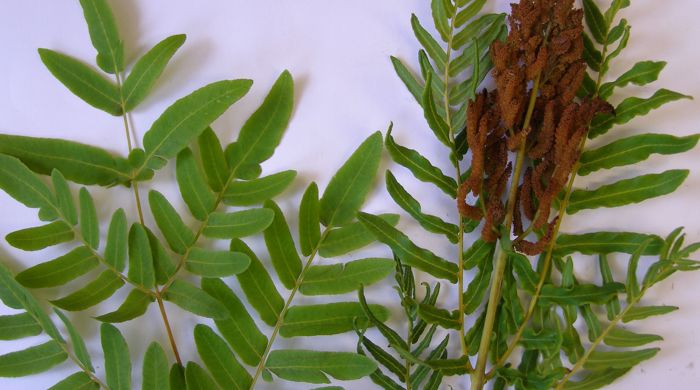Osmunda regalis
Royal fern
Family: Osmundaceae
Origin: Africa, Eurasia, North and South America

Regional Pest Management Plan (RPMP) status
- Aotea — Progressive containment
- Parkland with Significant Ecological Areas — Site-led (on-park only)
- Waitākere Ranges Heritage Area priority status
- Whole region — Sustained control
- National Pest Plant Accord Species
General description
Perennial deciduous rhizomatous fern. Fronds are < 3 m long, bi-pinnate and dimorphic, with sterile pinnae at base and reduced fertile pinnae at apex. Sporangia clusters are borne on fertile fronds during spring – autumn.
What you need to know
To help protect our environment:
- You must not breed, distribute, release or sell royal fern. As royal fern is a National Pest Plant Accord species, these restrictions apply within the Auckland region and across the whole of New Zealand.
- You must not plant royal fern within the Auckland region, unless you are transferring an existing plant on your land to another location within the boundaries of the same property.
- You must destroy any royal fern on land that you occupy if it has been planted in breach of the above rules and you are directed to do so by an authorised person.
Auckland Council will manage royal fern at all sites within the Aotea/Great Barrier Island group where it is known to occur.
If you see royal fern anywhere on Aotea/Great Barrier Island group, please report it to Auckland Council at pestfree@aucklandcouncil.govt.nz.
Habitats
Wetlands, still or slow-moving water body margins and flood zones, sand dunes, ditches, semi-open canopy forests.
Dispersal
Spores dispersed by wind.
Impact on environment
Forms dense stands and is likely to compete with native vegetation and restructure habitat. Potential to obstruct access, reduce enjoyment of and impact mauri of wai māori.
Control
Site Management
Follow up treated areas 3 times per year. Encourage natural regeneration of native plants or replant treated areas where possible after 2-3 treatments to establish dense ground cover and minimise reinvasion. Ensure correct identification and it is not a native fern.
Recommended approaches
Do not attempt to undertake control of this species on Aotea/Great Barrier Island group. Please report to Auckland Council if seen on Aotea/Great Barrier Island group.
Physical control
Method: Dig out.
Plant parts requiring disposal: Spores on leaves.
Disposal options: Remove to greenwaste or landfill if practical.
Biocontrol
Biocontrol is currently not available for this species.
Community agrichemical control recommendations
Basic Growsafe certified: Cut stump and spray freshly cut base with 1g metsulfuron-methyl per 1 L of water.
Certified Handler/Experienced agrichemical user: Foliar spray seedlings with 5g metsulfuron-methyl per 10L of water.
Caution: When using any herbicide or pesticide please read the label thoroughly to ensure that all instructions and safety requirements are followed.






